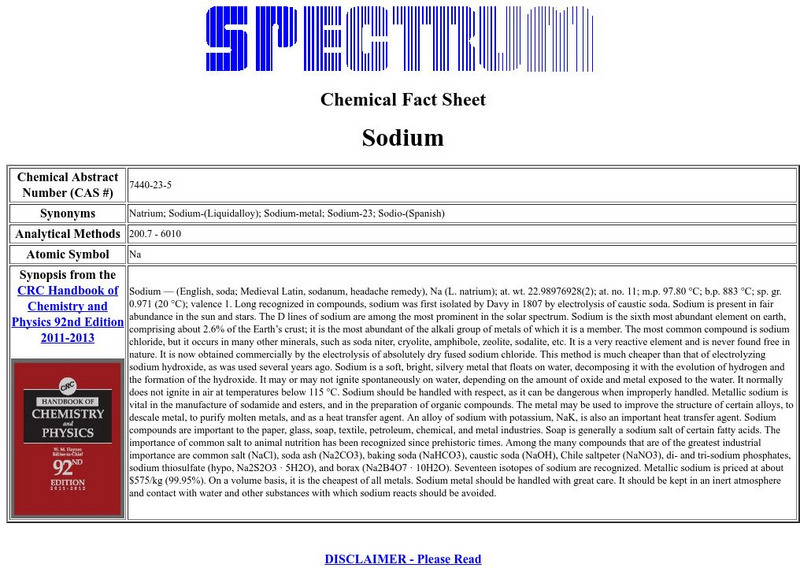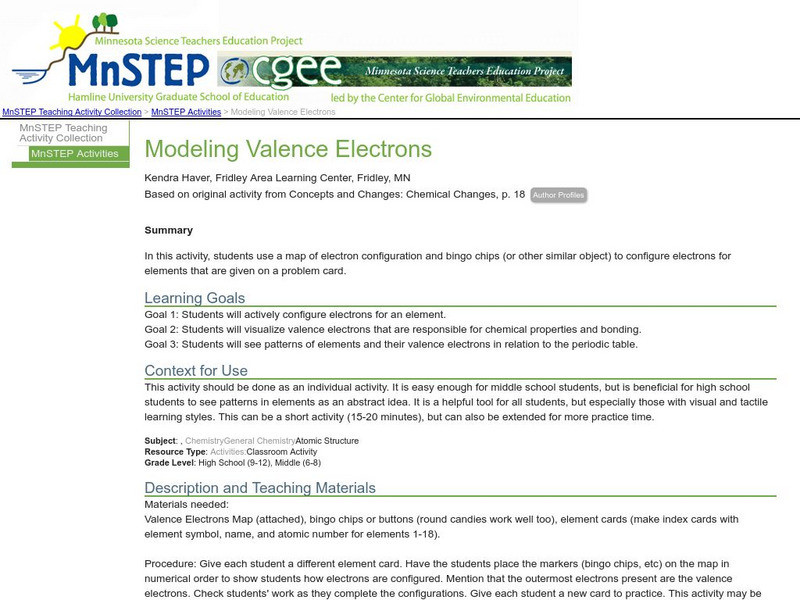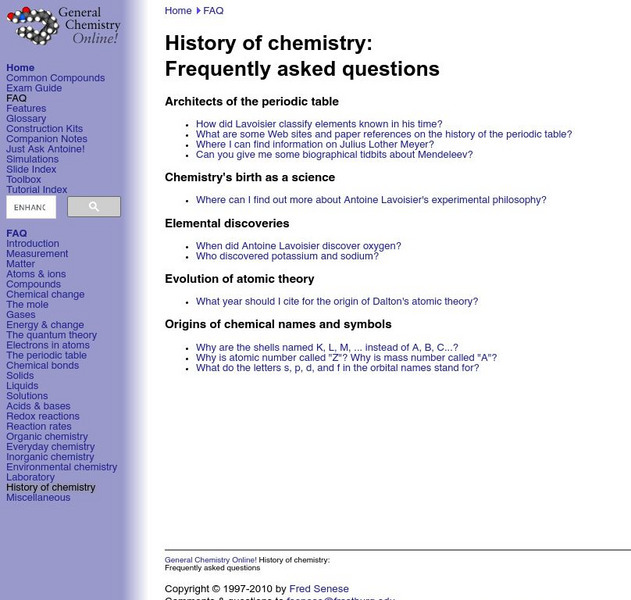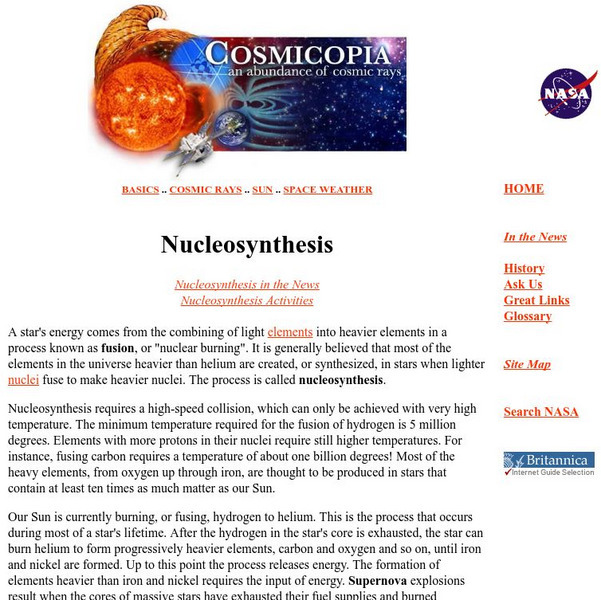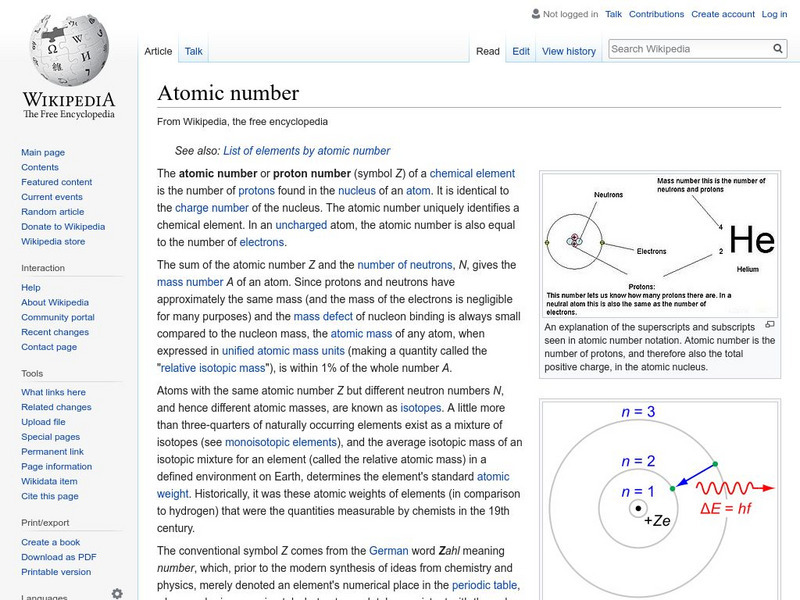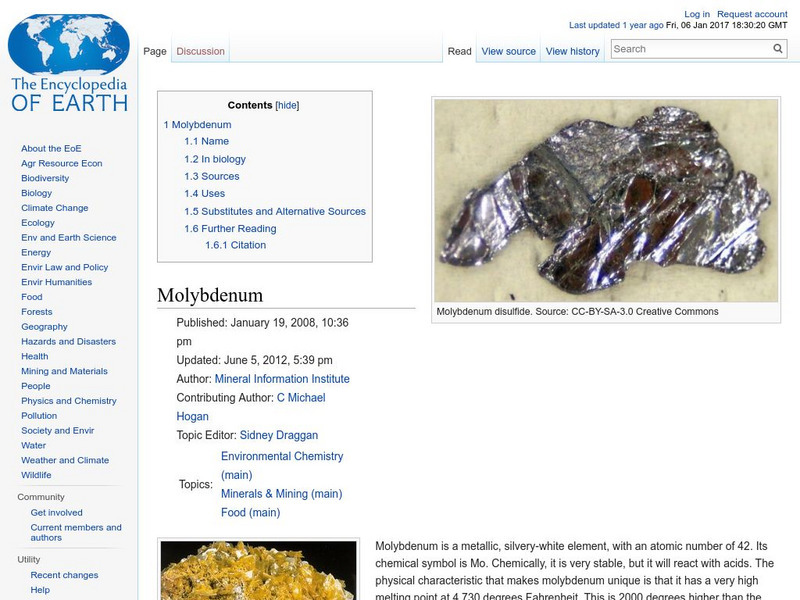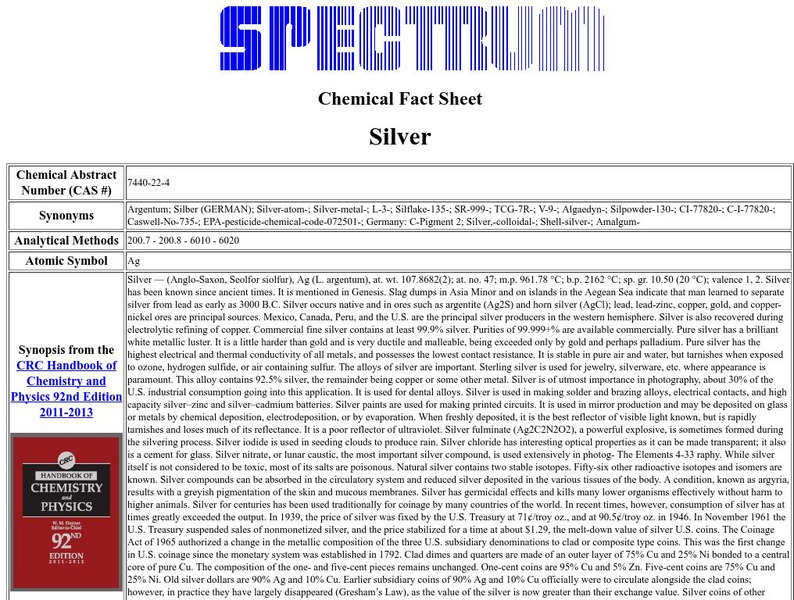Hi, what do you want to do?
Florida-Spectrum Environmental Services
Florida Spectrum: Chemical Fact Sheet: Sodium
This site provides elemental information which may not be found in many other sites. Here you can find historical information, common uses and even the approximate going price for a gram of the element.
Science Education Resource Center at Carleton College
Serc: Modeling Valence Electrons
In this activity, students use a map of electron configuration and bingo chips to configure electrons for elements that are given on a problem card. Students will see patterns of elements and their valence electrons in relation to the...
Sophia Learning
Sophia: Identifying Valence Electrons: Lesson 3
This lesson will explain how to identify the number of valence electrons an element has based on its position on the periodic table. It is 3 of 3 in the series titled "Identifying Valence Electrons."
Sophia Learning
Sophia: Writing Electron Configurations: Lesson 3
This lesson will demonstrate how to write the electron configurations for any element given its location on the periodic table. It is 3 of 3 in the series titled "Writing Electron Configurations."
Sophia Learning
Sophia: Periodic Trends: Atomic Radius: Lesson 1
This lesson will explain how the atomic radius changes over representative elements across rows and up and down columns on the periodic table. It is 1 of 3 in the series titled "Periodic Trends: Atomic Radius."
Sophia Learning
Sophia: Periodic Trends: Electron Affinity: Lesson 3
This lesson will explain how the electron affinity changes over representative elements across rows and up and down columns on the periodic table. It is 3 of 3 in the series titled "Periodic Trends: Electron Affinity."
Curated OER
Shell Model of the Atom
Acting as a subtopic of the General Chemistry Virtual Textbook's section on Atoms and the Periodic Table, this site discusses the properties of the atoms individually in relation to the main group elements of the Periodic Table.
CK-12 Foundation
Ck 12: Life Science: Chemistry of Life
[Free Registration/Login may be required to access all resource tools.] Many chemical reactions are going on constantly inside your body. In fact, there are probably thousands of chemical reactions occurring every second in every one of...
Frostburg State University
General Chemistry Online: History of Chemistry
A compilation of frequently asked questions in the world of chemistry. Look for answers about atomic theory, periodic table, and Lavoisier in this FAQ.
NASA
Nasa: Cosmicopia: Nucleosynthesis
NASA's Cosmicopia illustrates the process of element creation in the universe.
Florida-Spectrum Environmental Services
Florida Spectrum: Chemical Fact Sheet: Indium
This site provides a fact sheet with information on the basic data and properties of Indium. It also includes some of its uses.
Wikimedia
Wikipedia: Atomic Number
Wikipedia provides the definition of the term, "Atomic number," a term used in chemistry and physics to represent the number of protons in the nucleus of an atom.
Sophia Learning
Sophia: Chemical Reactions: Lesson 9
This lesson will present a basic understanding of the periodic chart of elements and how to predict chemical reactions based on given information. It is 9 of 9 in the series titled "Chemical Reactions."
Encyclopedia of Earth
Encyclopedia of Earth: Tantalum
A description of the element, Tantalum, atomic number 73. Covers the origin of its name, sources, uses for it in industry, and possible substitutes.
Encyclopedia of Earth
Encyclopedia of Earth: Molybdenum
Information about the metallic element, Molybdenum, atomic number 42. It is unique in having an extremely high melting point. Covers its discovery, its biological importance, its physical and atomic properties, how abundant it is on the...
Other
Especial Gas Inc.: Sulfur Properties and Compounds
This page from Especial Gas Inc. contains some very interesting information about the element sulfur, and some of its common compounds. The history and relative abudance of the element is discussed, as well as where it can be found. The...
Encyclopedia of Earth
Encyclopedia of Earth: Thorium
Information about the element, Thorium, atomic number 90. Covers physical properties, atomic properties, how abundant it is on the Earth, where it is found, and details about health-related regulations. Discusses thorium's potential use...
Encyclopedia of Earth
Encyclopedia of Earth: Nitrogen
Information about the element, Nitrogen, atomic number 14. Covers common chemical transformations, its physical properties, atomic properties, how abundant it is on the Earth, and details about health-related regulations. Also discusses...
Knowledge Share
Super Kids: Hangman
Use this interactive site to enhance students' spelling and vocabulary while refreshing their memories in history, geography, language, science, and entertainment. It is available to use on line or you can purchase leveled apps for the...
Encyclopedia of Earth
Encyclopedia of Earth: Physics & Chemistry: Calcium
Information about the element, Calcium, atomic number 20. Covers physical and atomic properties, sources, its role in geochemical cycles, how abundant it is on the Earth, its isotopes, some compounds of calcium, and its importance to...
Curated OER
Effective Nuclear Charge Periodic Trends
Acting as a subtopic of the General Chemistry Virtual Textbook's section on Atoms and the Periodic Table, this site discusses the properties of the atoms individually in relation to the main group elements of the Periodic Table.
Curated OER
Chem 1: The Shell Model of the Atom
Acting as a subtopic of the General Chemistry Virtual Textbook's section on Atoms and the Periodic Table, this site discusses the properties of the atoms individually in relation to the main group elements of the Periodic Table.
Florida-Spectrum Environmental Services
Florida Spectrum: Chemical Fact Sheet: Silver
This site provides elemental information which may not be found in many other sites. Here you can find historical information, common uses and even the approximate going price for a gram of the element.
State University of New York
State University of New York: Atomic Electron Configuration
This simulation displays the electron configurations of for the elements in relation to the element's position on the periodic table.





